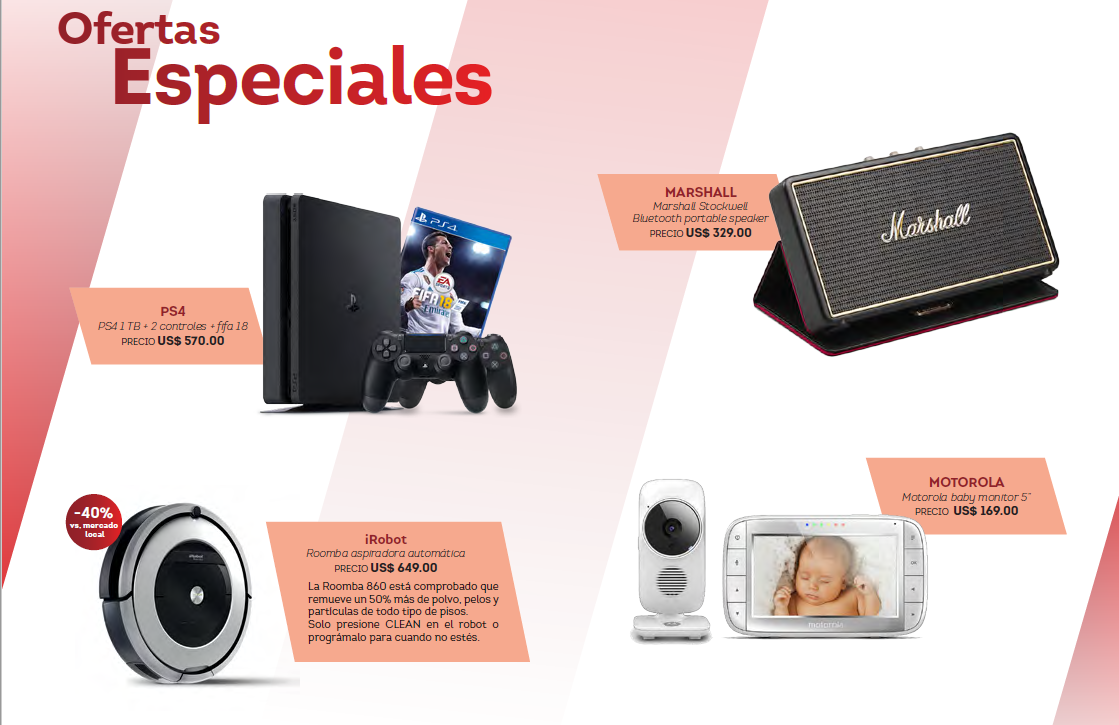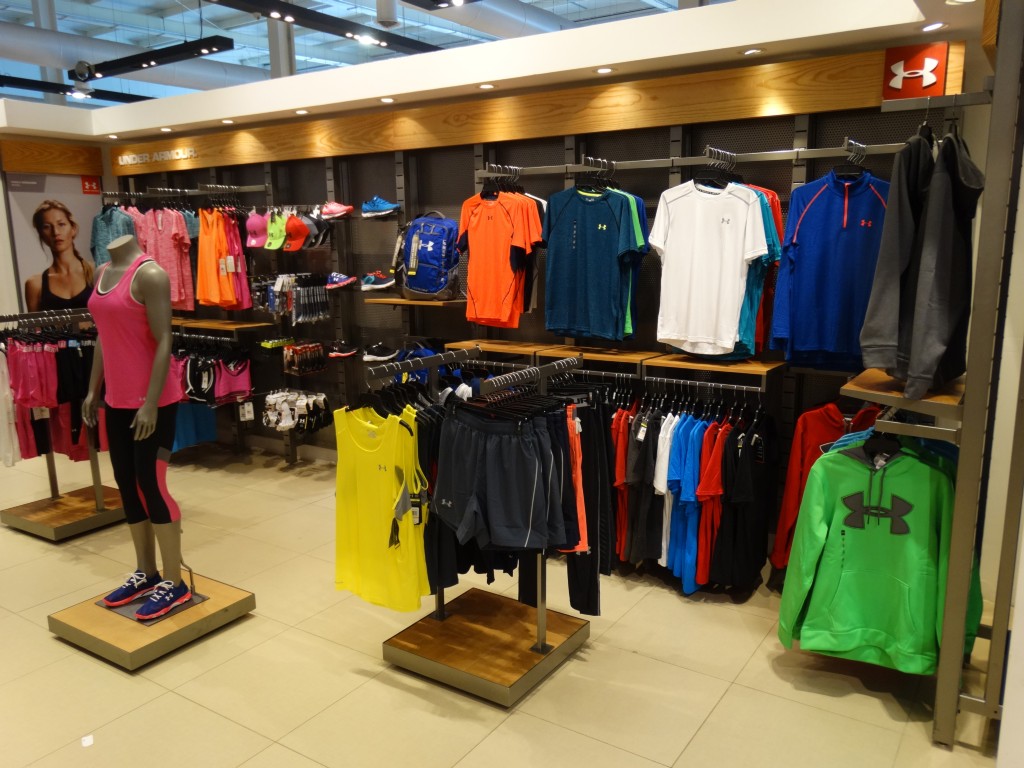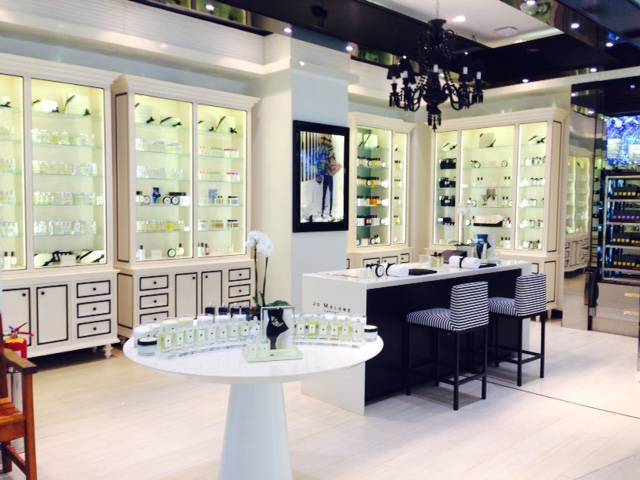For quite some time, I referred to him as “duty free John”. That’s because I met Mr Gallagher on Twitter and “the Scot that lives in Argentina and knows a lot about Latin America and is rather keen on Celtic” wouldn’t really cut it. So I was really pleased to finally meet John in Montevideo this week, a rare combination of masses of experience, humility, vast amounts of contacts and the energy to make things happen. I asked John a lot of questions about the duty free world in the Americas (he doesn’t just focus on Latin America, he knows North America well and also Europe) and I asked him if he could share some of this knowledge with us. I hope you enjoy this post as much as I enjoyed meeting John in person!

Source: www.dutyfree.com.uy (Dec 2017 catalogue)
John – tell us a bit about you – how did this love affair with the duty free world start?
I have been involved in the duty free business since the mid-eighties when I started work selling Scotch Whisky for a small company in the DCL Group, which later became Diageo. Wherever you sell wines and spirits, the duty free or travel retail channel is one of the most important segments to sell your product and showcase your leading brands to an international audience. I have lived about half my life outside Scotland, so my knowledge of the UK travel retail business is a bit sketchy. In contrast I have worked at different times with the most of the players in the Americas – it’s a great business with three big industry shows per year, the worldwide exhibition is in Cannes in October, the Americas show is in Orlando in March and the Asia show in Singapore held in May. Although the shows are fairly expensive to exhibit at, anyone looking at the business should look at attending the shows as a visitor to see if it looks right for you. If you can combine it with another sales trip to the relevant area, the relative cost can be quite small.
How would you summarise the world of duty free across Latin America in a short paragraph?
Like other parts of the world, the duty free business is an important channel for luxury goods and the high import taxes in many Latin American countries mean that duty free shopping is a way of reaching certain markets segments at a competitive price point. The Latin American middle classes like to shop and duty free shopping is an essential part of the travel experience, whether it be leisure or business.
I often discuss with our clients the importance of duty free shops on land borders, or even on ferries, which tends to come as a surprise – what opportunities can you see in these two types of retailers? What do they have in common and how do they differ?
Border stores and ferries are two very important channels. Retailers in these segments tend to be smaller and more flexible than in the airport segment. In the ferry segment especially on the River Plate you will see a lot of delicatessen type foodstuffs, toys and electronics. The drinks and perfumes selection are very important as they are in airports but the selection is also wider. Right now the best selection of malt whisky in a duty free shop in South America is on board the ferry that links Montevideo and Buenos Aires. There are some very big border stores in Uruguay and Paraguay and also on the US-Mexican border and they move a lot of merchandise.
The big development in border stores in the region is likely to happen sometime next year when border stores in Brazil may open. Legislation was approved for these stores five years ago but the Brazilian Customs authorities have still to put adequate controls in place to control logistics and monitor purchasing by Brazilian residents. Local sources are indicating that the first stores will open in Q3/Q4 of 2018.

Source: Duty Free Americas
We usually associate “duty free” with alcoholic drinks and perfume, but I’ve seen all sorts of fascinating products at Latin American duty free shops, what categories are growing?
Perfumes and cosmetics accounts for close to 45/50% of turnover in duty free shops with alcohol accounting for a little over 20%. Other segments that are growing would include fashion clothing, confectionery, foodstuffs, electronics, toys and sports equipment. On some of the big border stores in Paraguay and Uruguay you will even find things like air conditioning units, spare parts for cars and fishing rods.
In your opinion, is entering Latin America through a duty free shop a viable alternative to going straight into a home market?
Duty free is not for everyone but the channel should be included in every market study for fast moving consumer goods and luxury products. Duty free will be an additional segment for most brands not an alternative. As well as duty free you also have large duty paid shops in some domestic airports like Brasilia and Buenos Aires Aeroparque. A friend has just listed one of his malt whisky brands in the duty paid store in Aeroparque and I am convinced that this will open up the domestic market for his company.
What does it really take (apart from you!) for a buyer at a duty free shop or chain to consider a specific product? What are buyers (really) looking for?
Buyers will look at products that are succesful in the domestic market of the travellers using that airport. Brazilian travellers are probably the biggest spenders in Latin American duty free and if you are doing well there all buyers will look at your product. Buyers will always look at a product that is different from the competition (better price, better promotion, original design ….)

Jo Malone have just opened at Guarulhos Sao Paulo airport (picture: Veja Sao Paulo)
What recent incorporations (brands or products) to the duty free world in the region have really pleased you? And which have shocked you?
I love seeing products from home that I can’t get in the local market. Shortbread, jams and marmalade are available in the duty free store on the ferry that connects Buenos Aires and Montevideo. You will also find strange beer brands there and I can get one of my favourite Scottish brands on the same ferry!
Can you tell us any stories of products that totally failed to crack the duty free world in the region (or a specific country)?
Quite often fast growing brands find it difficult to get into the duty free shop. Duty free buyers can be quite conservative and some of them don’t like taking risks. Tito’s Vodka for example is huge in the US domestic market but very small in duty free in North America.
You are currently based in Argentina, well-known for all sorts of importation barriers, do you think that entering the market through a duty free could help? If so, how?
Officially import licences are disappearing in Argentina since Macri became President two years ago. The reality is that other non-tariff barriers are now come in place and these are more time consuming. For example, a Health Certificate for a food product will take between 9 and 12 months to get – before it was 3 to 4 months!
Brazil is another giant that most British companies find impenetrable due to import duties and other taxes as well as a very bureaucratic importation process. Is duty free an appealing alternative or just as costly and complicated?
The Brazilian duty free market is huge. The big business in Brazil is arrivals shops and anyone arriving at Sao Paulo or Rio de Janeiro will see the stores where the local residents use supermarket shopping carts to raid the shelves (the duty free shop operator will look after your suitcases while you shop!). Most of the airport stores in Brazil are controlled by Swiss owned Dufry, who purchased World Duty Free Group in 2015 , who control the stores at Heathrow, Gatwick and a few other British airports – they are tough negotiators but once you get in sales will justify the airport. When the Brazilian border stores eventually open, I am convinced that this new scenario will bring many opportunities for small and medium sized producers.
From my experience, duty free shops in the region usually ask for 50 to 60% margin, is this correct?
That is correct and sometimes even more – 70% may be required for some of the store operators. If you get a listing you need to think about educating and training the sales staff in the store. Some form of sales incentive programme will also be useful. Never think that once you get a listing that the work is done: you have to push the product off the shelf and make sure it goes into the shopper’s basket.
Finally, what are your top three tips for British companies thinking about selling into duty free shops in Latin America?
Be Patient – if you have sold in the duty free segment in other continents, you will know that decisions take time
Keep in contact with the buyers – keep the buyers aware of things you are doing in other markets and advise them of new products you launch
Direct your effort in a concentrated fashion. Draw up a list of three operators that make sense for your product and find out who the buyer is for your category. Then send an offer telling the buyer why your product is the best for them!
